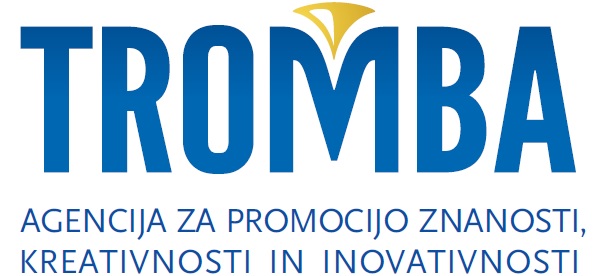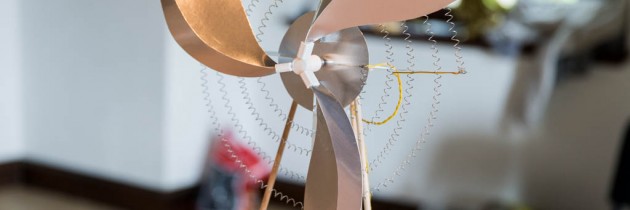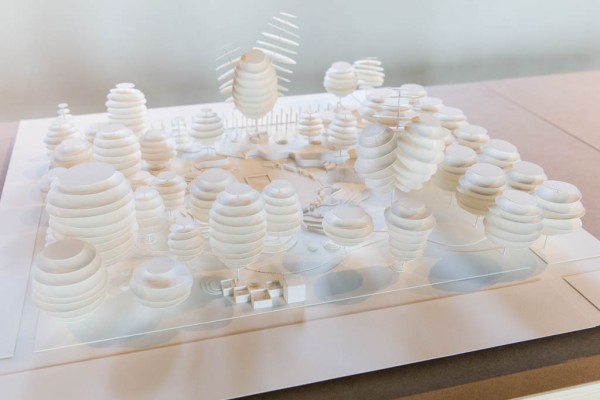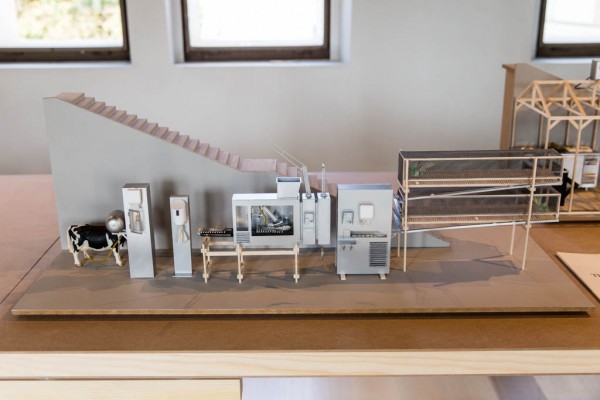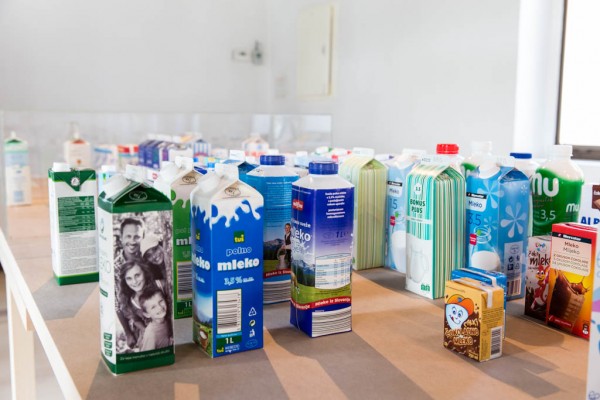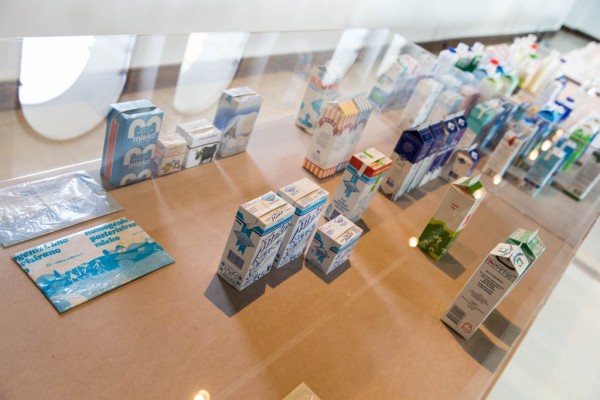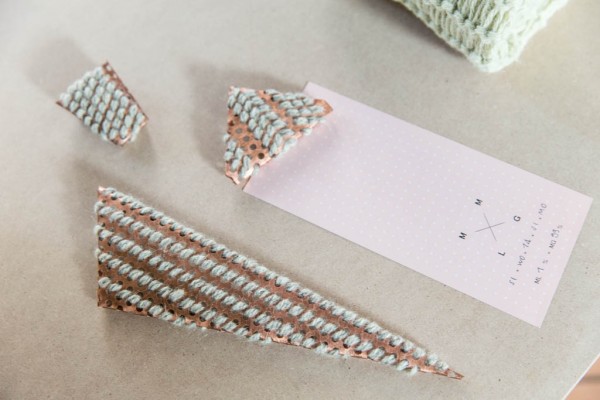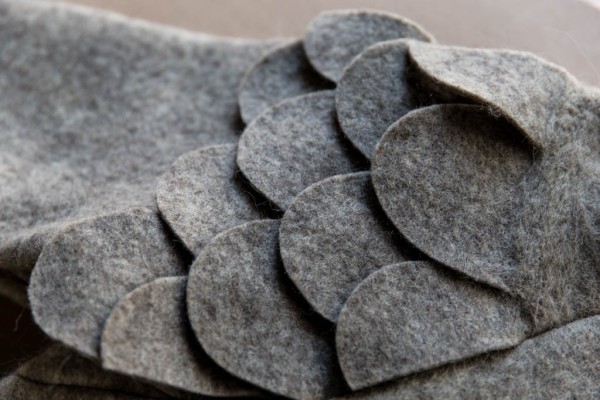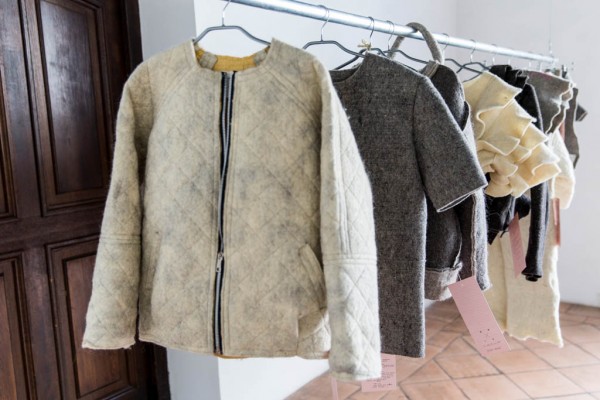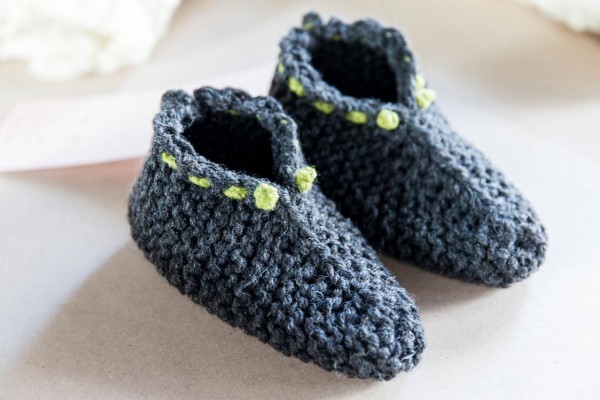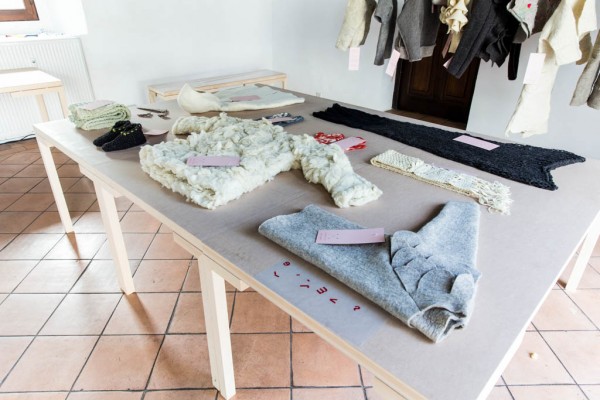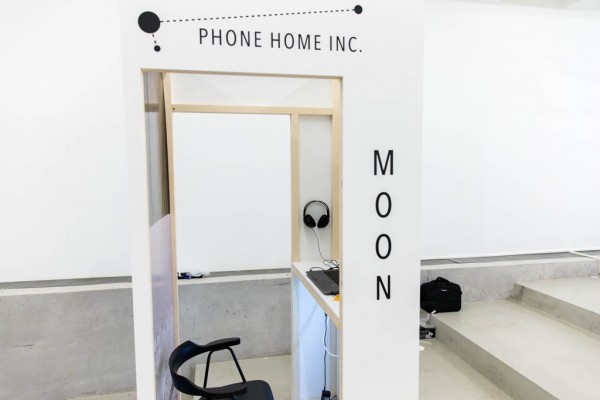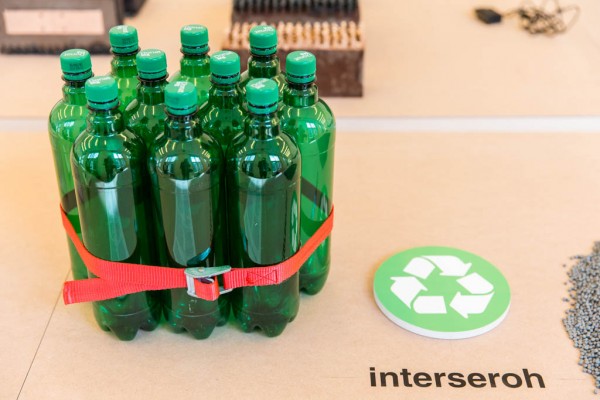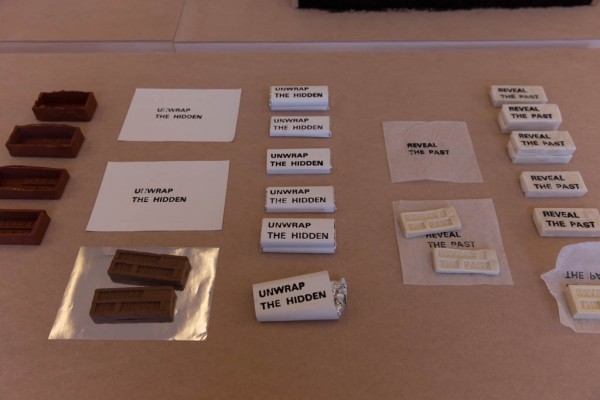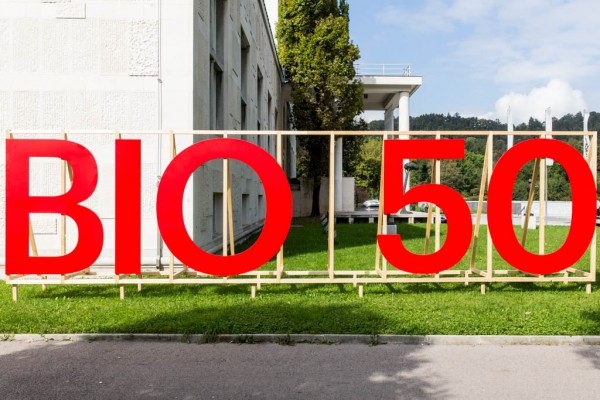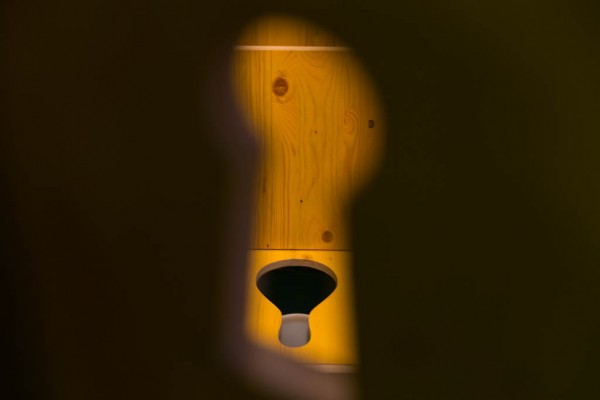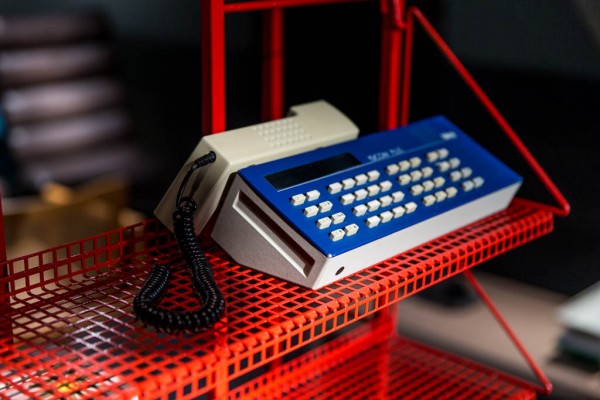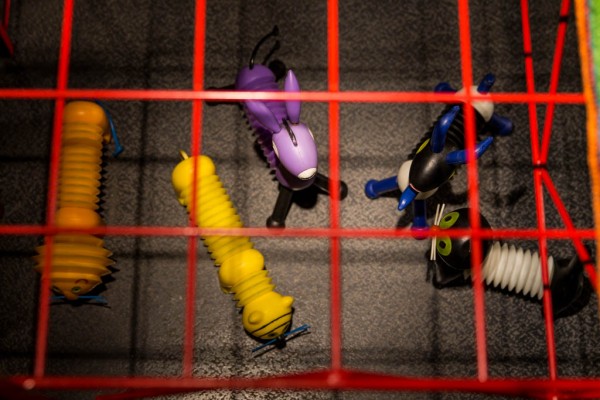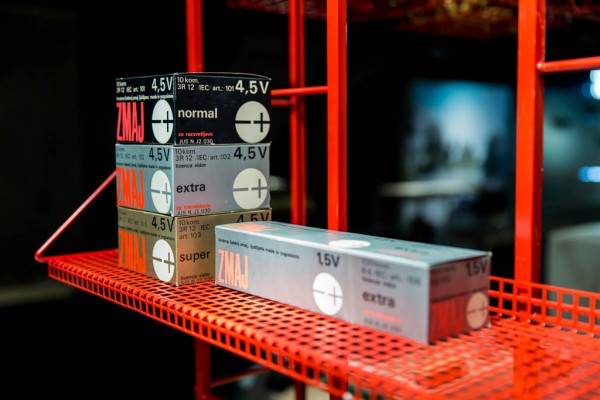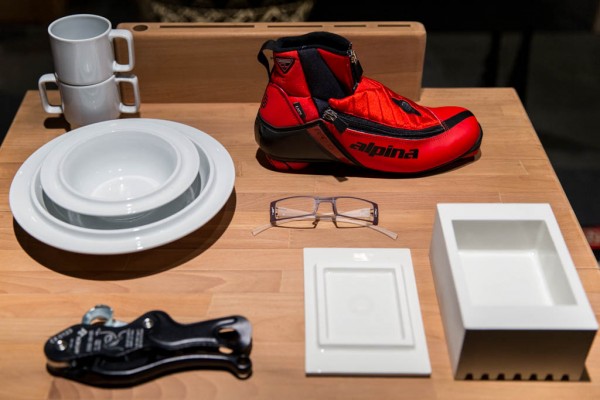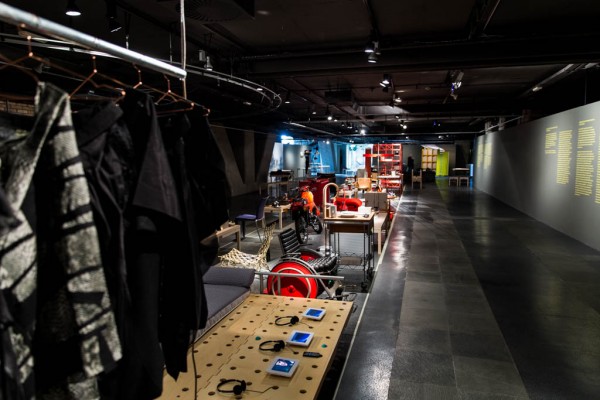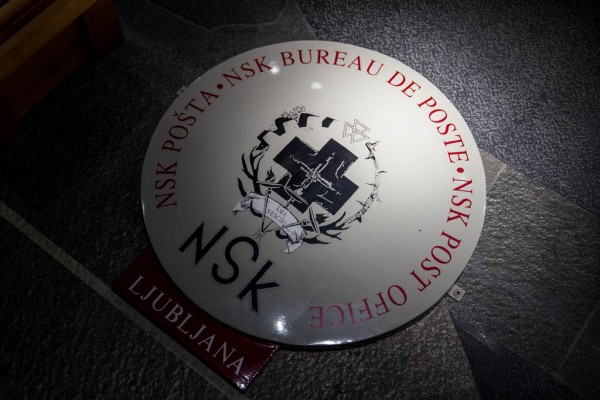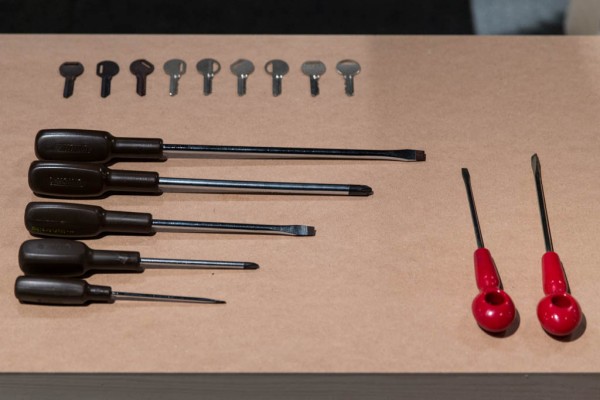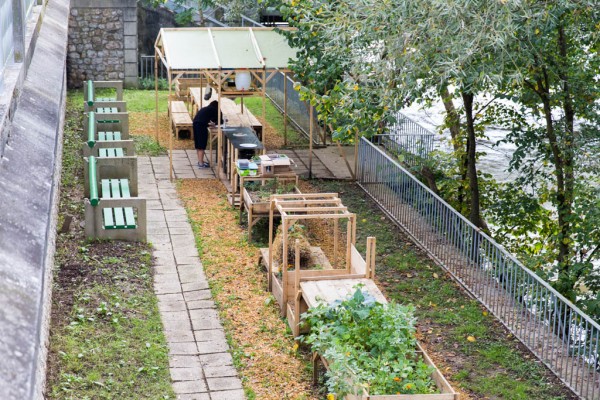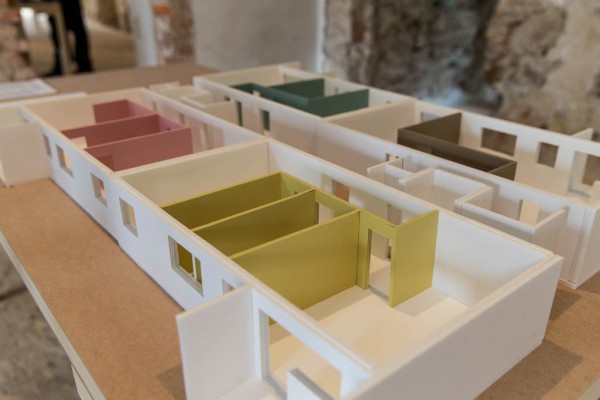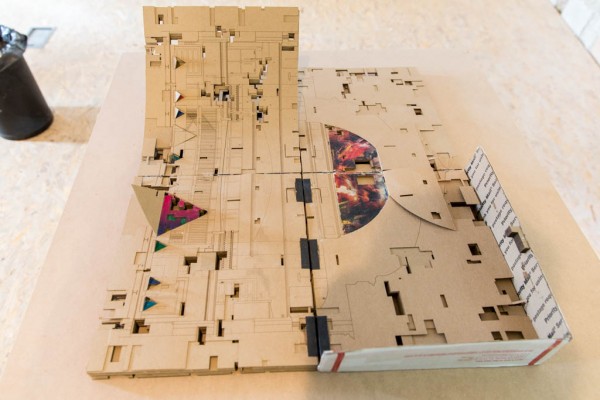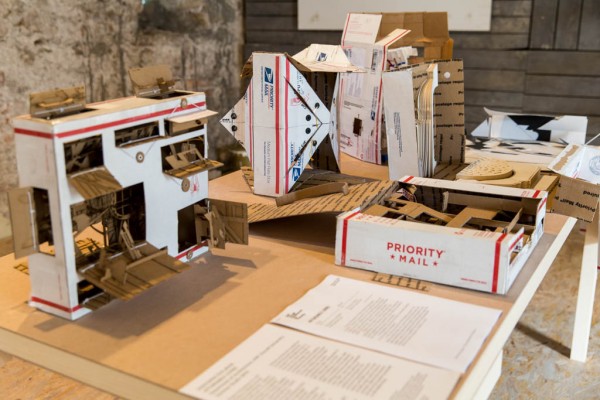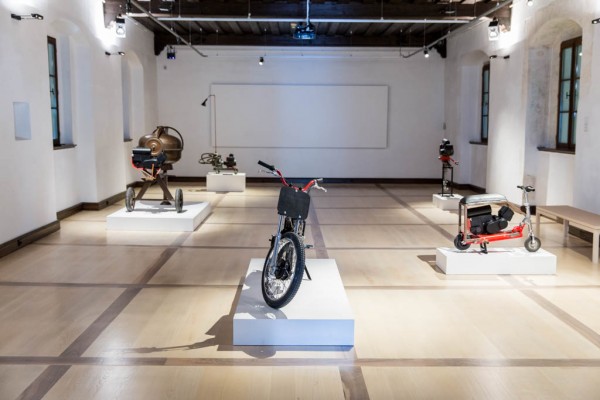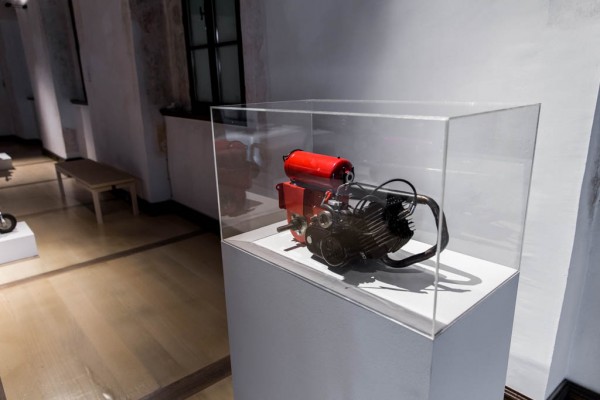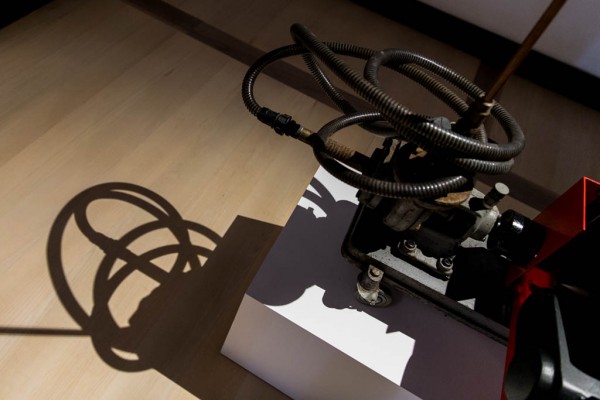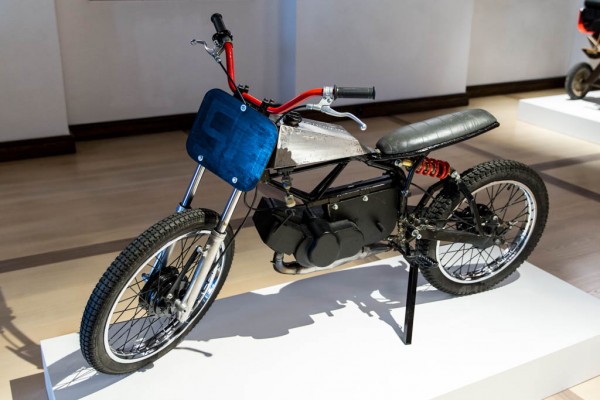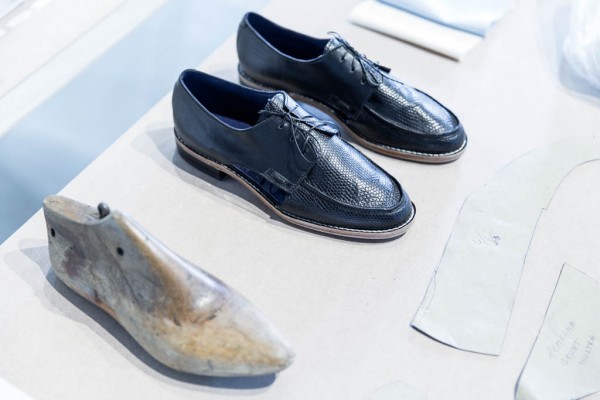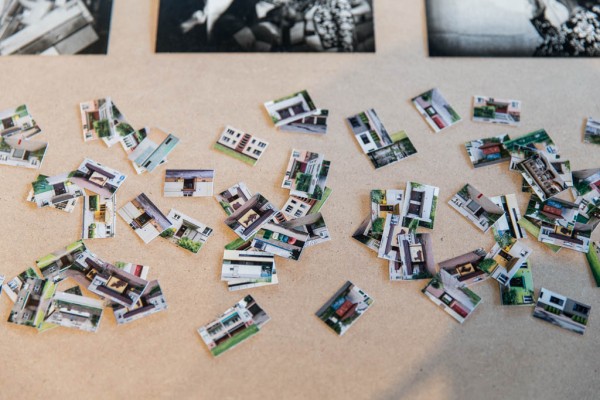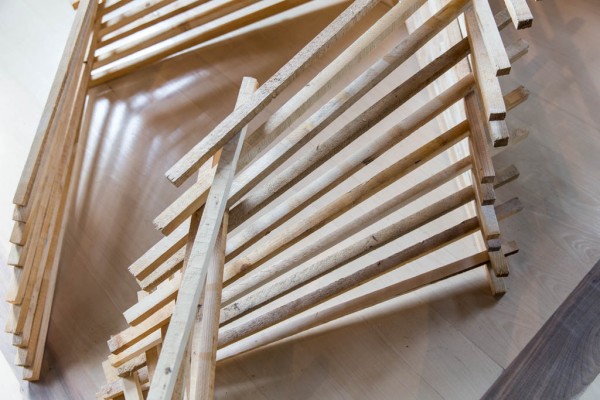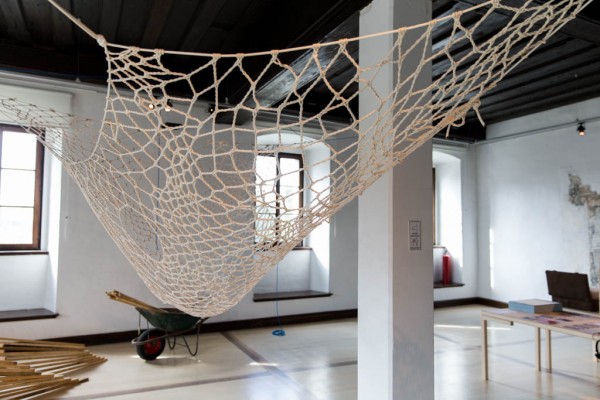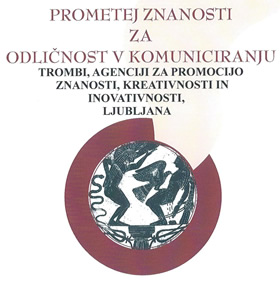The Biennial of Design in Ljubljana unveils the results of a six-month-long collaborative process
The Biennial of Design in Ljubljana unveils the results of a six-month-long collaborative process
The Museum of Architecture and Design proudly announced the winners of the Awards for Best Collaboration of the Biennial of Design at the opening of the event on 18 September in Ljubljana.
Among the exhibited projects created within the Biennial of Design, the BIO 50 jury, comprised of industrial designer Konstantin Grcic, design critic Alice Rawsthorn and designer and professor Saša J. Mächtig, selectedfouraward-winners.
The BIO 50 Award was given to projects by Nanotourism group led by mentors Tina Gregorič and Aljoša Dekleva. The Hounourable Mentions were received by the groups Designing Life, Engine Blocks and Fashion System.
Jury statement
We were tremendously impressed by the quality, dynamism and originality of the projects in BIO 50, especially as they address so many important and contentious issues facing contemporary design. In an intensely turbulent era when we face radical, potentially destructive changes on so many fronts, BIO 50 plays an indispensible role in suggesting possible solutions thanks to the diligence, determination and vision of Jan Boelen and his gifted collaborators.
The Best Collaboration Award at BIO 50: Nanotourism
Nanotourism is an outstanding example of design ingenuity being used to reinvent and reinvigorate an important area of the Slovenian and other economies. The quality of the individual projects is exceptionally high. They are original, appealing and so pragmatic that they promise to endure. From a collaborative perspective, Nanotourism is both ambitious and highly complex and has dealt with a range of local communities with sensitivity and charm, while demonstrating the ever more eclectic nature of design and its potential to improve the quality of everyday life. Team mentors: Aljoša Dekleva and Tina Gregorič.
Honourable mention: Designing Life
An increasingly important aspect of design is reinterpreting its relationship to science, which Designing Life interprets in an unusually witty, provocative and polemical way. Team mentors: Jurij Krpan, William Myers.
Honourable mention: Engine Blocks
A simple idea, playfully executed, Engine Blocks makes an intriguing contribution to the emerging culture community of D.I.Y. makers and fixers. Team mentors: Gaspard Tiné-Berès and Tristan Kopp.
Honourable mention: Fashion System
At a time of growing interest in folkloric and craft traditions, Fashion System is an intelligent and engaging approach to raising awareness of a neglected Slovenian resource. Team mentors: Tina Hočevar, Eugenia Morpurgo, Evan Frenkel.
On Thursday, 18 September 2014, more than 120 designers and multidisciplinary agents descend upon Ljubljana for the opening week of BIO 50, the Biennial of Design. Over the course of four days, they will unveil the results of a six-month long collaborative process, offering perspectives on possible futures for design. The awards for best collaboration will be presented by the BIO 50 jury comprising industrial designer Konstantin Grcic, design critic Alice Rawsthorn and designer and professor Saša J. Mächtig. Before the opening,thetalk with Alice Rawsthorn, Justin McGuirk and Jan Boelen will be organized.
Brought together by the experimental framework that shaped BIO 50, eleven groups tackled the themes of Affordable Living, Knowing Food, Public Water Public Space, Walking the City, Hidden Crafts, The Fashion System, Hacking Households, Nanotourism, Engine Blocks, Observing Space and Designing Life, creating specific projects to be implemented during the Biennial and beyond.
Following a period of intense research, where collaboration and learning were fundamental values, the outcomes are widely diverse, ranging from a series of household appliances developed under the same principles that shape open-source software to a garden pavilion developed with the local residents to encourage new discussions about food. Other outcomes include a performative experiment that challenges the way one experiences walking in the city, as well as a multipurpose engine that doubles as a survival tool in a dystopian vision of the future.
“The opening week of BIO 50 will be the culmination of a long term process, which started about a year ago with the activation of local and international agents, when all those involved will descend upon Ljubljana,” said BIO 50 chief curator Jan Boelen. “Other than the presentation of the team’s process and projects, which will offer insights into possible futures for the design discipline, there will be a strong focus on creating connections with the city at all levels. From a series of debates aiming to create a local design policy to events happening all over the city, just the mere presence of the many, many agents that took part in BIO 50 will create a very particular dynamic in Ljubljana during the opening week.”
Founded in 1964, BIO was the first design biennial in Europe. In 2014, on the occasion of its 50th anniversary, it undertakes an ambitious transformation, from a traditional industrial design competition into a six-month collaborative process. In its experimental approach and ambitious goals, this edition of the Biennial becomes a case study for what design and design events can be in the contemporary world.
BIO 50 is shaped by the exhibition 3, 2, 1 TEST, which presents the process and projects developed by each of the groups. It is further enhanced by the retrospective exhibition The Biennial of (Industrial) Design over 50 Years, and complemented by BIO 50: NOW, a lively program of side events.
For this year’s edition, the Regional Development Agency of the Ljubljana Urban Region and its Regional Creative Economy Centre and company Eles, d.o.o. became main partners of BIO 50, supporting the event’s concept, interdisciplinary approach and some of the themes. Many partners, sponsors and supporters joined them; their support allows us to build a new, innovative form of the Biennial as a highly relevant international design event.
NEW CONCEPT
In the year of its 50th anniversary, the Museum of Architecture and Design (MAO), organiser of the Biennial of Design, invited Jan Bolen, renowned Belgian critic and curator to curate this jubilee edition. Jan Boelen is a director of Z33 – House for Contemporary Art, Head of the Master department Social Design at the Design Academy in Eindhoven (NL), and chairman of the Flemish Committee for Architecture and Design.
Boelen changed the Biennial’s concept into a new innovative form of design event. BIO embraces this opportunity to build upon its own tradition and history, advancing into an experimental, collaborative territory where design is employed and implemented as a tool to question and transform ideas about industrial production, public and private space, and pre-established systems and networks. Under the BIO 50 title, this year’s Biennial chose the concept of collaboration,where design is a tool to rethink everyday life and possible futures for design.»It is necessary to break with the fetishisation of products that has alienated design from production. I believe that BIO should play a role in this field and strive to support creativity in its most delicate and vulnerable stage. This means that in the future, BIO has to increasingly play a research-based, experimental role«, explains Matevž Čelik, the director of Museum of Architecture and Design.
The Biennial of Design on this year’s 50th anniversary connects the past, present and future. While the group exhibition projects of Biennial that deal with themes of everyday life suggest the possible future, the historical exhibition of selected works of BIO extends into the past and highlights the key developments in the design and society. The program BIO 50: NOW, which will include a number of design activities from exhibitions, guided tours, presentations and lectures to children’s creative workshops, talks and workshops, however expresses the present.
SELECTION, THEMES AND WORK PROCESS
The conceptual change of the event was well received in Slovenia and abroad; 593 applicants from a record number of 56 countries responded to the international call for applications. The curator Jan Boelen, co-curators Maja Vardjan and Cvetka Požar, and the mentors of each of the BIO 50 themes selected more than 100 multidisciplinary participants from 20 countries engaging in eleven themes: Affordable Living, Knowing Food, Public Water Public Space, Walking the City, Hidden Crafts, The Fashion System, Hacking Households, Nanotourism, Engine Blocks, Observing Spaceand Designing Life.
Following the vibrant February kick-off of BIO 50in Feburary, which reunited more than200 participants and other guests in Ljubljana, the collaborative work has begun. For each team, international and Slovene mentors have elaborated a project brief, guiding and overseeing the process over the six months.Extensive processes are going on in real and virtual space, with participants engaging in creative, unexpected ways to communicate, organize, and progress in their design process. »From a constant postcard exchange between the Walking the City team members, to Skype dinners with diverse ingredients organised by the Knowing Food group, the participants have found countless ways to surprise us, displaying an engaging resourcefulness and boundless enthusiasm,« said BIO 50 curator Jan Boelen.
During the course of six months, the team members with diverse experiences, knowledge and motivation developed one or more projects to present at the Biennial.In the Hidden Crafts group, BIO has connected designers with Slovenian companies and manufacturers to cooperate in the research process leading to new ways of understanding craft. The projects were developed in cooperation with Steklarna Hrastnik, Tiporenesansa, Kamena, Petrič, Rokodelski center Ribnica and Interseroh & Consensus & Plastika Skaza. Beside already mentioned Skype dinners, the Knowing Food group was developing future scenarios for food and planted museum’s food garden programmed to cultivate the food, to prepare it and to consume it with others. While the Designing Life group examined the interconnection between biology, sciences and design and the possible forms of life in extreme living conditions, the Observing Spacegroup was exploring new ideas that can be sparked by the presence of man in outer space. The Hacking Households group will present a scenario of hacked household appliances, based on an open API objects. A hacked, interchangeable and removable Tomos engine was used on such devices as a brick machine, a motorbike, a sawmill, a water pump and a boat developed by the Engine Blocksgroup. The research on materials like local wool and new production system, deconstruction and use are the main topics of the Fashion System group. The Public Water Public Space is engaged in different projects regarding water in public space, such as a fog garden, water moulds, a four season fountain, a watering system and more. The Walking the City group established an Agency for Walking that will explore and promote different ways of walking in the urban space. The Affordable Living group is looking in at the potential of empty, unused buildings, developing structures and programmes for the revival of community life in the neighbourhoods and dealing with topics of affordable ownership. The Nanotourism group is searching for alternatives to existing tourism industry, suggesting new micro scale possibilities and spreading the projects outside Ljubljana to Maribor, Vitanje and Zagreb.
BIO 50
BIO 50 is shaped by the exhibition 3, 2, 1 TEST, which presents the process and projects developed by each of the groups. It is further enhanced by the retrospective exhibition The Biennial of (Industrial) Design over 50 Years, and complemented by BIO 50: NOW, a lively program of side events.
The exhibition BIO 50: 3, 2, 1 …TEST will be displayed from 18 September to 7 December 2014 at the Museum of Architecture and Design, Jakopič Gallery and at Museum of Modern Art in Ljubljana. Within the themes of everyday life, it presents the outcomes of each team’s collaborative work: Affordable Living, Knowing Food, Public Water Public Space, Walking the City, Hidden Crafts, The Fashion System, Hacking Households, Nanotourism, Engine Blocks, Observing Space and Designing Life, showing the possiblefutures of design.Topics are presented uniformly in a single individual exhibition space, some of them however extend beyond them (the garden of the team Knowing Food and the container of the team Affordable Living at Fužine Castle, one of the projects of the group Public water – Public space in the center of Ljubljana…) or are available as a service (for example: hotel BIO 50 of the Nanotourism or project of Walking the City).
The exhibition design was made by Matic Vrabič, the author of visual identity and graphic design is Ajdin Bašić.
BIO 50 is further enhanced by the retrospective exhibition The Biennial of (Industrial) Design over 50 Years, displayed at the Jakopič Gallery. Museum of Architecture and Design, under which BIO operates since 1972, keeps a rich archive that documents the history of the Biennale and the history of design in Slovenia, in the republics of the former Yugoslavia and last but not least also in other countries, which regularly or occasionally participated at BIO. The foundation of the Museum’s design collections are also works (domestic and foreign), which have been exhibited at BIO and whose selection will be presented at the exhibition. Biennial of Industrial Design was officially established in the autumn of 1963 at the initiative of the City Council of Ljubljana, Chamber of Commerce SRS and professional associations as the biannual comparative exhibition of Yugoslav and foreign achievements of industrial design. The first exhibition was held in Ljubljana in 1964, consciously named Yugoslav exhibition with international participation. Due to the massive response from designers from abroad, the second Biennial (1966) was renamed in the International Biennial of Industrial Design.
As Cvetka Požar, the curator of historical exhibition of the Biennial of Design pointed out: »Next to Triennale di Milano, BIO was one of the most important European design events in the 1960s, and the first biennial of its kind in the world. It witnessed massive participation from designers from eastern as well as from western Europe« BIO has been for more than forty years based on the concept that was raised at the first biennial exhibition. The biennial exhibition and accompanying events have had in a period of half a century encouraged and continuously fostered a discourse on design. With the passing of the time new tasks and issues facing the society and consequently design have emerged. These have at the beginning of the 21st century required a different conception of the exhibition. »The Biennial has become a traditional event in this part of Europe, and today more than ever before it is so much more than a mere a point of contact to the international design scene. It creates new ideas, incentives and above all alternatives to the existing mode of work.« The lists of previous biennials, selection of bibliography, accompanying events and all awarded works from BIO history will be published on www.bio.si.
The historical overview of the Biennial of Design and development and each team’s progress and resulting projects will be published in an accompanying book titled Designing Everday Life, co-published by Park Books. The book will include contributions by Slavoj Zizek, Chantal Mouffe, Alice Rawsthorn, Justin McGuirk, Konstantin Grcic, David Crowley, Thomas Lommee, Liesbeth Huybrechts, Jan Boelen, Cvetka Pozar and many others. It will be published in separate Slovene and English edition.
Alongside visions of the future and reflections on the past, a lively program entitled BIO 50: NOW will animate the city of Ljubljana for the duration of the Biennial from events, exhibits, guided tours, presentations and lectures to children’s activities, talks and workshops. The program will be held at the main venues at the Museum of Architecture and Design, Jakopič Gallery and at Museum of Modern Art as well as at the other locations in Ljubljana and Slovenia, with individual presentations also in Trieste and Zagreb.
Sunday guided tours that will take place every Sunday at 11:00 will reveal detailed insight into the exhibition BIO 50. Visitors will be acquainted with the exhibition through the interpretation of the organizers of the Biennial of design, curators, mentors and team participants, while the tours will be designed as a marathon, classic or themed tours of the exhibition at various venues. At the same time at 11:00 children will be able to study topics of Biennial in creative, playful and entertaining way at Sunday children’s workshops. Every other Thursday in MAO will be devoted to discussions on current topics raised by the Biennial, and at the conclusion of the biennial the final conference on design policy will take place. In cooperation with MMC RTV Slovenia, we are preparing a contest of short films for the young filmmakers. Program of exhibitions at other locations will also be plentiful, most notably an exhibition of microphones by the designer Mark Turk, exhibition of Instagram photos titled Transmitting the Energy and the exhibition by the architect Rianne Makkink. Varied events of program NOW on which we cooperate with other organizers, will at the time of the Ljubljana Biennial animate the design scene, including exhibitions Gorenje at a Touch, Currency of Fashion, Body, textile, memory and many other interesting events.
The BIO 50: NOW program is available on http://bio.si/en/program/ >>
Photo gallery by Igor Domijan:
